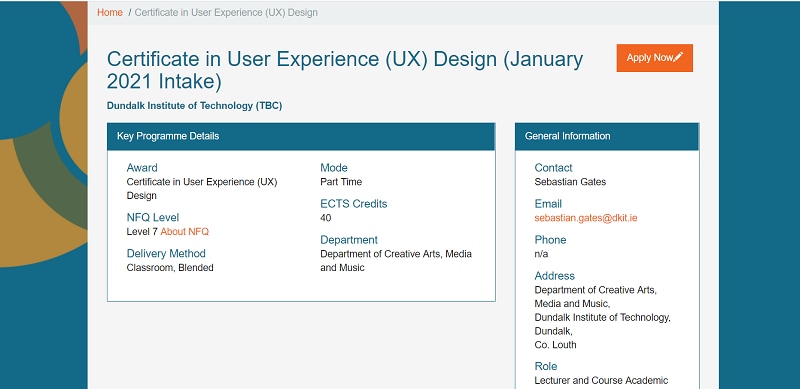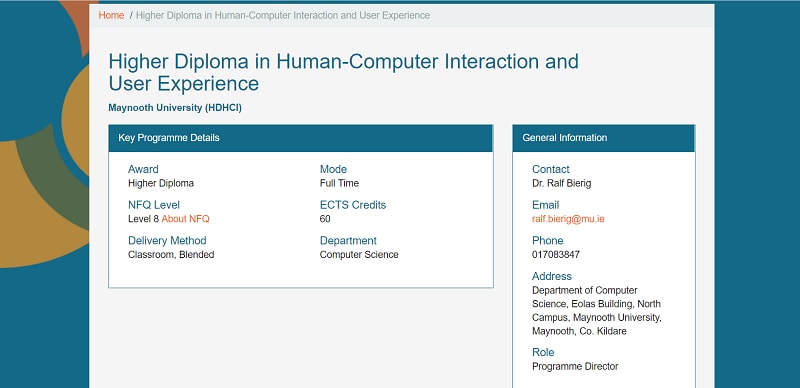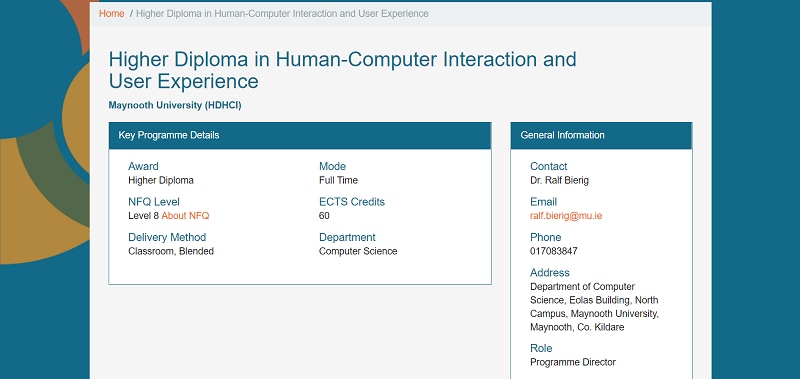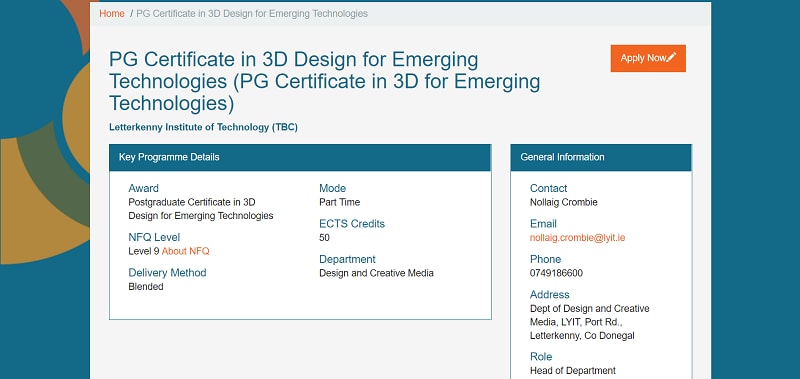Top 10 Springboard Courses for Every UX Designer

Springboard is a leading ed-tech startup founded in 2013 with the goal of helping people anywhere in the world advance their careers through affordable, mentor-led online courses. Since then, this innovative startup has helped thousands of students across the globe grow their skills and build new and rewarding careers via a flexible, human-centric, online approach. Their education model has launched students from more than 100 countries into professional success. Springboard delivers curated, expert-developed curricula via a mentor-led approach that emphasizes hands-on learning and human interaction. This focus on hands-on learning is especially an aspect that makes this platform stand out for aspiring UX professionals.
The UX courses offered by Springboard provide students a unique opportunity to work on substantial design projects and complete a real-world externship with an industry client. After 9 months, students graduate with a UI/UX design mindset and a portfolio to show for it.
- Part 1: Top 10 UX courses on Springboard
- Part 2: What is Springboard
- Part 3: Springboard UX/UI design courses for 2021
- Part 4: Prototyping tool for UI/UX designers
Top 10 UX courses on Springboard
While most of the courses on Springboard fold into one of their job-focused programs, we have listed below the individual courses in detail for simplicity. Springboard has 3 job-focused programs for aspiring UX professionals – UI/UX Design, UX Design, and Introduction to Design. Most of these programs require minimal to no UX background. This makes it ideal for beginners.
1. Intro to User Experience Design
If you are wondering if UX a career in UX design is right for you, this is definitely the right starting point. During this UX design introductory program, you will combine creative design work with problem-solving while focusing on the end-user. You can start this course for free. The first section of the course is a high-level introduction to UX design. The subsequent section focuses on understanding users and building an empathy mindset. Finally, the course gets to the principles of ideating, sketching, and wireframing. Clearly, all stages of design thinking are covered in this course in a very interesting fashion. The course is self-paced and has been curated by Sara Nagy, a senior UX writer, and Researcher at Davita's Mobile Community of Excellence.
2. Introduction to UX Design
As part of Springboard's Design curriculum is yet another introductory course for beginners. The course starts off with an introduction by the folks at UXMastery.com - what is UX design and why you should learn more about it. The course then provides an overview of the general principles of user experience for the online world. The instructors take you through the various steps of designing a website experience for an actual client. The last section of the course is an Adobe master class, with the author of The Elements of User Experience. This section looks at tools and techniques for analyzing, understanding, and solving user experience problems. All in all, this is a great starting point for UX professionals.
3. The User-Centered Design Process
User-Centered Design is when the needs, wants, and limitations of end-users of a product, service, or process are given attention and meaning at each stage of the design process. This course introduces learners to the principles of human-centered design. The course then takes a deviation to user-centered design and compares the 2 approaches. Mentors for this course and the overall job-focused programs on Springboard include UX professionals from the world's top tech companies like Google, Uber, Home Point Financial, and Axonify.
4. Design Thinking
Design Thinking is a process of thinking that creates empathy for a problem by considering a human-centered lens for solving that problem. Don Norman is considered by many to be the godfather of User Experience Design. This video course provides a summary of key concepts from the first two chapters of his seminal book, The Design of Everyday Things. Using video, handouts, and facilitation tips, you will be guided into the process of participating in a 90-minute design challenge. Through this experience, you will take away some of the basic principles of Design Thinking and start to adapt them to your personal and professional routines.
5. Research & Personas
In this course, you can learn about tools such as journey maps, methods for translating insights into design priorities, and a process for involving your teammates in the user research process. You will be introduced to the ins and outs of modern design documentation and the new tools that aim to improve it from industry experts. This course details how to conduct field research and also provides an introduction to prototyping. The course discusses the importance of using personas in designing interfaces that will help your users to achieve their goals. This course is filled with interesting interviews with industry experts and is aimed to provide students a real picture of what the UX research process really looks and feels like.
6. Content & Strategy
Content is the heart of any app or website and strategy is the high-level plan to achieve that content. This course teaches you how to perform card sort research to uncover information about user interactions, analyze the results, and create a validated information architecture plan. You will learn how to translate your plan into refined menus, content classification, and page layouts. This course helps you learn how to construct meaningful content and measure how successful a site is after launch. Learn the process of analyzing and reshaping web content to improve SEO while refining a brand's voice. The course also lays a special emphasis on Mobile Experience Design Strategy.
7. Visual Design
Visual design is the application of emotion to the functionality of an application. In this course, you will learn about some fundamental principles of visual design including Balance, Emphasis, Hierarchy, Repetition, Proximity, and Proportion. You will also learn how to craft icons of different sizes and all use shared layer styles. Springboard clearly understands that mobile is an important consideration in the design of any digital product and has mindfully included a special section in the course that details the principles of visual design for mobile-based applications.
8. Teams and Communicating Design
Technological demands have forced designers to become multifaceted. In the current environment, it's no longer acceptable to be talented at design aesthetics alone—these days, you are expected to also have a good working knowledge of digital strategy, customer journey mapping, and coding. But there is one skill that trumps them all -good design communication. UX Designers work as part of tech product teams and this course is a spot in identifying the importance of communication for designers – be it while checking feasibility with developers or while handing off specifications for development. The course shares ways to engage non-designers in the design process. This is an underrated but very useful skill for designers.
9. Design Documentation
In this course, instructors go over wireframing basics via short easy questions such as "What are wireframes?" "Why use wireframes?" "What does the process of wireframing look like?" They also explain the different types of wireframes and show examples of their work. You will also explore how sketching and prototyping change processes for the better. Learners are introduced to kits to prototype for specific platforms and multi-channel experiences. The course empowers learners to begin developing re-usable patterns, components, and shortcuts as well.
10. UI/UX Design Bootcamp
A prerequisite for this elaborate UI/UX design course is simply an eye for good visual design and the ability to empathize with your user. In the course, you'll work on substantial design projects and complete a real-world externship with an industry client. After 9 months, you will graduate with a UI/UX design mindset and a portfolio to show for it. This Bootcamp provides participants an opportunity to get mentored 1:1 weekly by an industry expert mentor. That's not all. You will also get coached 1:1 by a dedicated career coach. This Bootcamp encompasses almost all the individual courses listed above. In addition to mini-projects throughout the program, you'll complete 4 portfolio projects, including a design sprint - where you will rapidly cycle through the entire design process in one week. The program has received some great reviews from past learners.
What is Springboard?
Primarily, Springboard is an online coding school offering flexible and mentor-based courses to help students integrate machine learning, AI, and Data Science into the world of coding. The reason Springboard courses are unique is because they are developed with learning that every student's needs are unique and the learning cannot be uniform for everybody.
Added to this, the education model of this platform is curated to ensure that post-completion of the courses, the students are able to face real-world problems with confidence. Along with the course, there is practical work to help the students not only learn but also implement their understandings of the subject.
The courses on Springboard have a clear focus that at the end of the course duration the students will be able to secure a job. Another great thing about this platform is that it gives the students the option to pay after they are hired and does not ask for any share in the income.
Apart from the course, there are four additional aspects that will help a student navigate through the entire course smoothly. The student advisors are always available for student support. Personal mentors take care of the course studies and will answer the queries, questions, and also help with the project work.
The career coach on Springboard is there to help the students find relevant jobs while giving them a personalized pitch and assist with the job search. Lastly, there is the Springboard community of existing and ex-students and mentors open for networking and interaction.
Springboard UX/UI design courses for 2021
Gearing up to become a UX/UI designer by 2021? Well, this is the perfect time to start building your career with one of the Springboard UX design course. Below you will find five Springboard Courses for this purpose.
- Higher Diploma in Human-Computer Interaction and User Experience

After completing the course, you can start your career by working as a User Experience Designer, Human Factors Engineer, and Information Architect. However, that is not all. You can also find a suitable and well-paying job in various other industries.
Anyone looking to join this course must pass NFQ Level 8 studies and have 60 ECTS credits. The one-year program will help you understand the humanized aspects of building an interface while allowing them to build a suitable design structure along with knowing how to convert it into working code.
The Human-Computer Interaction or HCI is the field that highlights the aspects of the interaction between humans and machines. Basically, this course trains you to empathize with a user of the computer and address the concerns first hand.
- Certificate in User Experience (UX) Design

You can start taking this course after passing NFQ Level 7 and 40 ECTS credits. The Certificate in UX Design course, trains you to combine your creativity with technical skills and build meaningful user experiences. From user research to user journeys and design thinking, this Springboard course takes the student the techniques to build prototypes and understand branding.
The purpose of this Springboard UX design course is to help you build a balance between technical aspects of design and design usability, functionality, and branding.
At the end of the course, you will be ready to work in an organization as a UX designer. The course modules cover digital visual communication, UX web design fundamentals, concepts of UX, front-end development, and entrepreneurial skills for digital industries.
- Postgraduate Diploma in Packaging, Innovation and Product Design

To join this Springboard course, you must have passed the NFQ Level 9 and secured 60 ECTS credits. With this course, you will be able to learn the theories of packaging, innovation, and product design along with getting practical knowledge about the same.
Moreover, this course is training you for the leadership role in the right organization that focuses on creating the right type of packaging and product design. The field of product design is highly sensitive and consumer-oriented, ergo, the course is designed to foster the detailing required to not only understand but implement these things while working.
The course includes modules like strategic management, product design and prototyping, packaging science and technology, innovation practice, and research methodologies.
Lastly, there is an applied case studies module where you can also create a strategic capstone project.
- PG Certificate in 3D Design for Emerging Technologies

To get enrolled in the PG Certificate in 3D course, you need to have Level 9 NFQ qualification and 50 ECTS credits. This course covers the subject matter related to emerging technologies in several industries including entertainment, marketing, and education.
There is a high demand for designers in these industries and create designs suited for augmented reality and virtual reality. The entire course is planned to cover the fundamentals of developing 3D content in emerging technologies.
- Certificate in Digital Media Design

The Certificate in Digital Media Design requires the students to obtain Level 7 in NFQ and 40 ECTS credits before joining. After this course, you will be able to create the required visuals for social media platforms, websites, digital billboards, presentations, pitch decks, and much more.
The purpose of this course is to help students become technically strong in design principles and digital marketing concepts that use UI/UX design. Along with this, the students enrolling for this Springboard UX design course can also gain maturity in visual communication and become an agile creative practitioner.
While learning different kinds of design principles, it is also essential to implement what you have learned during the course. For this purpose, you need to work with a designing tool that is suitable for all kinds of designers, amateurs to veterans.
Prototyping tool for UI/UX designers
Prototyping tools are essential for every designer as they help concretize the design ideas based on the designer's creativity and design principles.Wondershare Mockitt by Wondershare is an advanced prototyping tool that provides access to a simple yet amazing repository of designing tools and features.

Besides prototyping Mockitt holds a competitive advantage to create wireframes, UI frameworks, mockups, and overall designs. Mockitt is both web-based and can be downloaded on your system. There are device-specific layouts pre-developed that can be inserted in the artboards.
For beginners, there are editable templates that can be modified with numerous UI items and assets. In Mockitt, it is also possible to create asset libraries or import the same from other sources, or even import Sketch (another prototyping tool) designs.
Mockitt is good for training, practice, and creating designs for clients or organizations. So, combined with the Springboard courses, working on Mockitt alongside will help you not only practice the subject matter but also help explore the world of design first hand.
Conclusion
Springboard claims that ITS course and Bootcamp offerings have helped several students to kick start their UX design journey. Some of their graduates were hired by top tech companies like Google, Facebook, DELL, Lyft, and IBM. Springboard is indeed changing the way UX is taught with a very hands-on and customized experience for every student that enrolls with them. It is, therefore, no doubt that picking a UX course on this platform is definitely a good bang for the buck. The remote work situation has led to more learners opting for this learning model and they have some great things to say about Springboard. We encourage you to pick up a UX design-focused course today and jump on the bandwagon to create some fantastic products for users.

